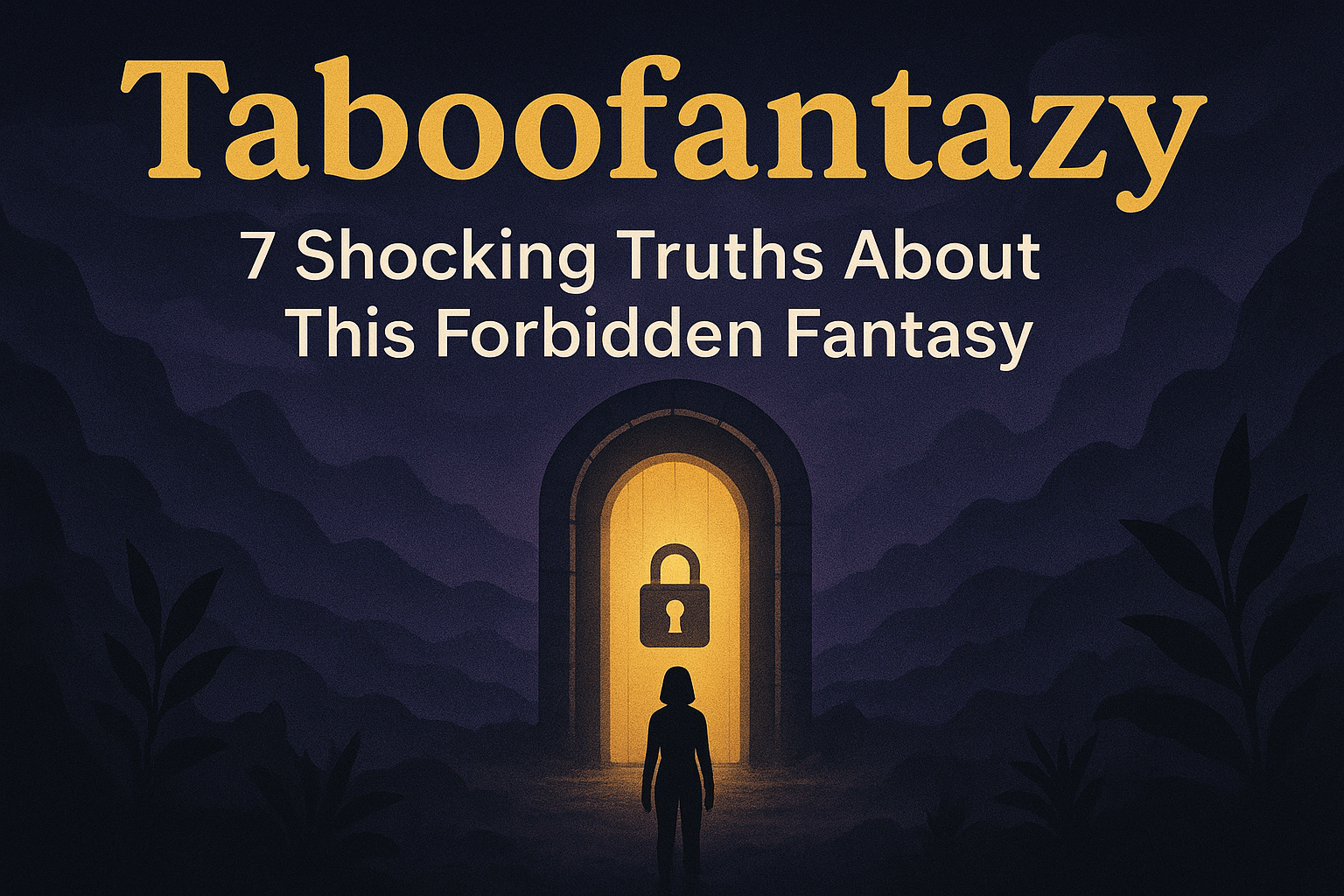Have you ever been gripped by a fantasy so intense, so compelling, yet so socially unacceptable that you dared not whisper it to a soul? You’re not alone. This is the enigmatic realm of taboofantazy—a psychological landscape where desire dances with prohibition. If you’ve searched for this term, you’re likely seeking understanding, not just titillation. You want to know why these thoughts occur and what they mean about you. This guide will demystify taboofantazy, exploring its deep psychological roots, its purpose in our minds, and how to navigate it healthily and without shame.
What Exactly Is a Taboofantazy? Breaking Down the Term
Let’s start with a clear definition. A taboofantazy is any sexual or romantic fantasy that involves themes, scenarios, or dynamics that are considered forbidden, taboo, or socially transgressive. The power of the fantasy is directly fueled by its “off-limits” nature.
It’s crucial to understand the difference between fantasy and reality. Fantasies are private mental narratives. They are a safe space for the imagination to explore concepts that one may have no desire to actually enact in real life. The “taboo” element can range from relatively common power dynamics (like boss/employee) to more complex and controversial fictional scenarios. The common thread is the psychological charge derived from crossing a forbidden boundary in the mind.
The Psychology Behind the Forbidden: Why We’re Drawn to Taboo
Why does the forbidden fruit taste the sweetest? Psychologists and researchers point to several key factors that make taboofantazy so potent.
-
The Reactance Theory: This is a well-documented psychological principle that states when something is forbidden, we want it more. Our brain rebels against the limitation, making the prohibited object or idea incredibly attractive.
-
The Thrill of Transgression: Simply put, breaking rules—even imaginary ones—releases dopamine, the neurotransmitter associated with pleasure and reward. The mental act of transgressing a social norm provides a safe thrill.
-
A Safe Exploration of Power & Control: Many taboo fantasies involve themes of power, surrender, or control. In a controlled mental environment, exploring these dynamics can be a way to process feelings about authority, vulnerability, and autonomy without any real-world risk.
-
Cognitive Dissonance as a Catalyst: The tension between what we “should” want and what we actually find arousing creates a powerful cognitive dissonance. The mind works to resolve this tension, often by intensifying the fantasy.
7 Common Themes in Taboofantazy and What They Might Mean
While the spectrum is vast, certain themes recur frequently within this genre. Understanding them can shed light on their symbolic meaning rather than their literal interpretation.
1. Power Imbalance Dynamics
This includes fantasies involving figures of authority, age-gap scenarios, or boss/employee relations. What it might symbolize: Often, it’s not about the specific roles but about the exploration of trust, surrender, or being desired by someone powerful (or vice-versa).
2. Non-Consensual Fantasies (In a Consensual Context)
It’s vital to state that actual non-consent is a crime and a trauma. However, fantasies of forced seduction or capture are surprisingly common, particularly among women. What it might symbolize: Experts like Nancy Friday, in her book “My Secret Garden,” suggest this often represents a desire to be free of responsibility for one’s own desire—to be “swept away” without guilt or choice.
3. Voyeurism and Exhibitionism
The thrill of watching or being watched taps into a deep human curiosity and a desire for validation. What it might symbolize: A need to connect, to feel seen and desired, or to safely explore intimacy from a distance.
4. Taboo Locations and Risk of Discovery
The idea of being intimate in a public or inappropriate place (e.g., the office, a library, a plane). What it might symbolize: This often heightens the excitement through the added risk, making the act feel more urgent, spontaneous, and passionate.
5. Partner Sharing or Cuckolding/Cuckqueaning
Fantasies involving watching one’s partner with someone else or being shared. What it might symbolize: This can be complex, relating to compersion (taking joy in a partner’s joy), a desire to see one’s partner as a sexual object of desire for others, or exploring feelings of jealousy in a safe space.
6. Taboo Relationships (Fictional)
This encompasses fictional scenarios that are impossible or illegal in reality, often explored through fantasy literature or roleplay. What it might symbolize: The appeal is often purely in the narrative tension of the “forbidden love” trope, a classic storytelling device that creates high emotional stakes.
7. Supernatural or Non-Human Entities
From vampires and werewolves to elves and demons, fantasy creatures are a staple of the genre. What it might symbolize: This allows for the exploration of ultimate “otherness,” raw primal instinct, and power that exists outside human morality.
Fantasy vs. Reality: Navigating the Ethical Line
This is the most critical section. Engaging in taboofantazy is a normal part of the human psyche, but it must be compartmentalized from real-world actions.
-
Consent is King and Queen: Any movement from solo fantasy to shared activity requires enthusiastic, informed, and ongoing consent from all involved parties. What is hot in theory can be harmful in practice without clear communication and boundaries.
-
The “Unacceptable” Thought Police Don’t Exist: There is no thought crime. Your private fantasies are yours alone and do not define your moral character. Feeling shame about a fantasy can often cause more distress than the fantasy itself.
-
When to Seek Help: If you find that a fantasy is causing you significant distress, is obsessive, or, most importantly, involves a real desire to harm a non-consenting person or child, it is imperative to seek guidance from a qualified therapist. This is about your well-being and the safety of others.
The Role of Taboofantazy in Literature and Media
The entertainment industry has long capitalized on our fascination with the forbidden. From the classic taboo themes in “Lolita” and “Fifty Shades of Grey” to the rampant use of vampire and supernatural romance (creatures who are literally “not human”), these narratives are popular because they tap into our shared psychological archetypes. They provide a vicarious, safe, and socially acceptable way to engage with these themes through story.
A Healthy Mindset: Embracing Your Imagination Without Shame
So, how do you integrate this understanding into a healthy sexual self-image?
-
Acknowledge Without Judgment: Notice the fantasy. Say, “Ah, that’s interesting,” instead of “Oh my god, that’s terrible.” Curiosity is healthier than condemnation.
-
Understand the Core Desire: Try to look past the literal theme. Are you craving a feeling of power? A release from control? A sense of being desired? The fantasy is often the symbol, not the end goal itself.
-
Communicate with a Partner (If You Wish): If you have a trusting partner, sharing these fantasies can deepen intimacy. Frame it as an exploration of your inner world, not a demand for action. Use “I” statements: “I sometimes have a fantasy about… I think it might be because it makes me feel X.”
-
Use it as Creative Fuel: Many writers, artists, and creators channel these complex themes into powerful art, transforming private fantasy into public narrative.
Conclusion: Your Mind is the Ultimate Sanctuary
Taboofantazy is a complex, deeply personal, and almost universal aspect of human sexuality. It is powered by the fundamental psychological attraction to the forbidden and the transgressive. Understanding that these fantasies are normal mental phenomena—not blueprints for action—is key to relieving shame and anxiety. They are stories we tell ourselves in the private theater of the mind, a safe space to explore the boundaries of desire, power, and passion. Embrace your imagination, always prioritize consent in the real world, and remember, the most forbidden frontier is often the one between your own ears.

